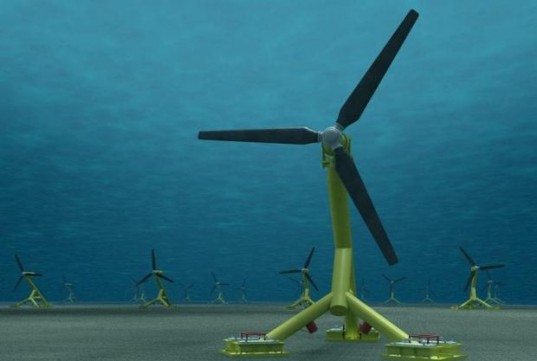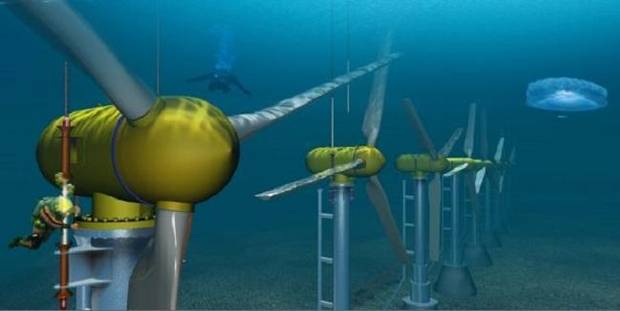Tidal Energy - Introduction
Due to the gravitational pull of the Moon and the Sun on the Earth, tremendous masses of water are circulating on Earth, creating the tides. Massive amount of energy is available from this water flow, that is 1000 times more dense than the energy provided by the wind (air flow).
Tidal energy is a renewable energy source that can produce electricity through different conversion methods. There are two main ways to convert tidal power:
- Tidal range: the water level difference between high and low tides can help produce electricity through turbines installed in a barrage (e.g. La Rance barrage). This energy conversion technique using a dam can be harmful to the environment.
- Tidal flow velocity: if currents are fast enough, a tidal energy converter (similar to a wind turbine but under sea level) can convert water flow into electricity. These devices can be easily located anywhere with suitable currents and minimizes damage to the environment (marine life can swim around the device, or through it if the turbine is slow enough).


Even though the different patterns that could occur can be rather complex, we can easily predict tide heights with accuracy for years in advance. It is not necessarily the case of currents, as other components that come into play make it more complex to predict its average speed.
However, the speed and direction of the currents of a particular site generally vary with the tidal state of this site.
The 3 main components that drive currents are: mainly the
rise and fall of tides, but also the
wind, and
thermohaline circulation.

